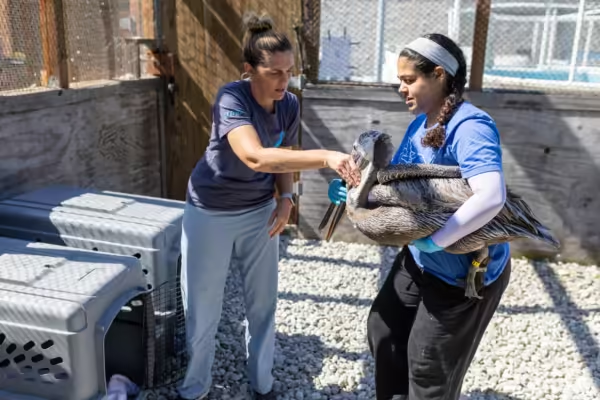Carmack’s ‘Red Cantaloupe Experience’ Lights Up Long Beach with Jazz
Since 1964, Robert J. Carmack has been a professional part of the Black cultural scene of Los Angeles. As his generation passes the torch to the younger set, he is on a mission to do his part to see that the great LA legacy of jazz doesn’t stop.
In this vein, Carmack’s “A Red Cantaloupe Experience” was the right flavor for a beautiful summer Sunday, presenting Jazzing and Jammin in July at Roscoe’s Jazz Lounge in Long Beach.

Carmack’s lineup featured some of the best jazz musicians in Los Angeles, and man did this quartet deliver it hot with music director Knick Smith on keys; Marvin “Smitty” Smith (the Tonight Show with Jay Leno band) on drums; Edwin Livingston on bass — acoustic and electric; and Rickey Woodard on sax and flute, plus special guests.
A highly engaged audience comfortably filled the room to capacity, and the wait staff kept everything running smoothly. Carmack strives to create this kind of ambiance in all his shows. More on that to come.
The band was going strong when I arrived. Two friendly women offered me a seat at their table. I couldn’t see much from that vantage but I could hear the magic. It’s been way too long since I’ve heard live, straight-ahead jazz — and this performance asked emphatically, why the hell not? This high-energy show had you steeped in it.
The quartet was swinging, performing a blend of classic and original tunes from jazz and fusion, doused with a little funk, to standards. On Tell Me a Bedtime Story (Quincy Jones and Herbie Hancock 1978) with its amazing arrangement given its composers, Smith’s quartet indeed met the mark. Smith is so precise on the ivories, flowing every time and “Smitty” on drums is just like a fast and powerful engine.
Smith’s Monkish, a straight-ahead number, brings rhythmic harmony between Smith’s keys and Woodward’s sax. And, in that bustling room full of folks articulating and activating, every single instrument came through clearly — including Livingston on bass. This number grooves. Smith harnesses the entire keyboard, simultaneously holding it down on the low octaves while his digits dance atop the high notes. The call and response of Smith’s dissonant chords and Livingston’s steady bass juxtapose an elegant conversation between the two.


Funky classic, Chameleon by Herbie Hancock (1973) grooves and Smith’s quartet put their stamp on that tradition. Based in Los Angeles, these consummate jazz musicians performed at the top of their craft right here in the City of Angels, via Long Beach. While LA has lost some of its great jazz clubs, it’s exhilarating to know that those that have survived and thrived still present amazing shows like this.
A Red Cantaloupe Experience
Robert J. Carmack, musician, actor, playwright, journalist and jazz historian produced the Red Cantaloupe Experience. He plans to put on more Red Cantaloupe experiences within the LA area. Each concert will be different. The event at Roscoe’s Jazz Lounge included a Royal Ambassador Awards ceremony honoring artists for their significant contributions to their art.
Carmack studied music, communications and theater arts, earning a bachelors of arts degree from California State University Dominguez Hills and a Master of Fine Arts at Columbia University in New York. During a break from college, he went on the road with the Bob Hope USO tours, during Vietnam, playing at military bases, hospitals and Non-Commissioned Officers or NCO clubs. Carmack came out of the 1960s and ’70s Black cultural movement. He was part of a group that co-founded the Paul Robeson Players, more than 50 years ago in the city of Compton, which staged plays at the Communicative Playhouse as part of the Communicative Arts Academy or CAA.
In 1969, artist Judson Powell founded the CAA. Together, with John Outterbridge as director and artists from Compton, Watts and South Central, the group initiated a vital arts program during the Black Arts Movement era in Southern California in the 1960s and ’70s, offering art workshops and programming, studios and performing art spaces. The CAA even transformed buildings across the city into art venues and objects of art, which could be used for a variety of events.
These days, it’s not about money for him anymore, Carmack said.
“The music part of my background was first and that will always be there but I can’t play anymore because I have bone loss and I can’t grip my mouthpiece. So … I write about jazz and blues … but I’m also a historian because I archive a lot of this music.”
Carmack created the Red Cantaloupe brand to stand out, through the shows’ concept and experience, amongst everybody else presenting jazz concerts so people throughout the LA region would be familiar with him. He is now in discussions with Roscoes about a potential Red Cantaloupe Experience residency, noting he is not limited to jazz.
“I just chose my passion. But I can turn on a dime and [present] R&B and soul. I can equally play with rock and indie rock bands as well. Red Cantaloupe is my idea of making something people will remember.”
Carmack said the red and the cantaloupe, to him, represents the blood of people who have fought for freedom and civil rights.
“I lived in Georgia for a while and I was writing about the red clay [there]. Freddie Hubbard wrote about red clay as a song. It was a very powerful jazz tune. That’s what red clay came from but … to me that has nothing to do with Freddie Hubbard, although I tied it into that. When I wrote that piece in the 1990s, it had to do with the blood that was spilled during the Civil War [when] people died and were lynched.”
In Carmack’s imagination, blood soaked into the soil and turned it red.
“If you go to Georgia, and [often] if you dig up the yard, it’s going to be red clay … [Red clay] is literally clay dirt. It’s not just in Georgia, it’s in a lot of the South. I don’t know why it’s that way but I tied that in symbolically.”
All of this is tied symbolically and politically for Carmack. By presenting this history in a contemporary way, he makes it tolerable for people to absorb and be able to get into it.
“We call that edutainment,” he said. “Educating you but entertaining you at the same time.
Carmack’s vision is to build his brand from these special presentations that are under the theme of Red Cantaloupe Experience, which could also include theater, a podcast, a poetry slam, or a performance. It can also include youth presentations. Carmack’s plays use a minimalist approach to focus on dialogue, driving the storyline with no set changes, and the music is curated from the particular era, historic African Americans, or Black musicians that he is paying tribute to.
“I don’t do traditional plays. I do Black plays meaning [they] are originally written by me or someone else. I have a series of plays, one of which is for Nina Simone I did in Leimert Park. I did another play at Barbara Morrison’s Performing Arts Center, just before she passed, called Requiem For Soul Brothers.
“Ultimately, bringing people back to the theater at the community level is really what the goal is … Theater is spontaneous. It’s in the moment.”
Carmack compared his music curation to the performance at Roscoe’s Jazz Lounge the day prior.
“I take intense music from people like McCoy Tyner [from] last night,” Carmack said. “He pushes a beat. It was actually a kind of music where there’s no time to be bored because he changes directions and he changes the speed. It’s just like … driving a car. You’re on the freeway doing 65 … you have to slow down because there’s a car in front of you … or [else] run into somebody right? You drop down the speed … then you have to stop all of a sudden … Like you saw in the show, the saxophone stops, the drummer stops, the base stops. It’s all in sync.”
Details: Roscoe’s Jazz Lounge, 730 E. Broadway, Long Beach andwww.pocketjazzpresents.org














